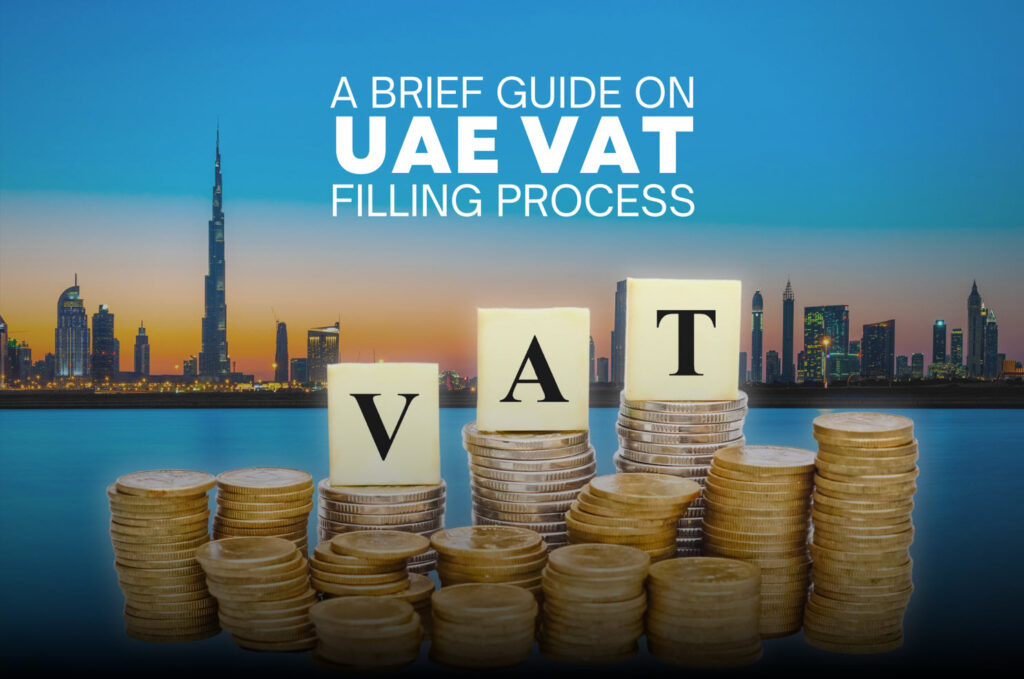Value Added Tax (VAT) in the United Arab Emirates (UAE) has become a crucial part of the business landscape since its introduction in 2018. Every company, whether large or small, must understand VAT compliance to avoid penalties and ensure smooth operations. This guide explains the basics of VAT taxation in the UAE, how it works, registration requirements, filing processes, and why professional assistance is essential.

What is VAT in the UAE?
VAT (Value Added Tax) is an indirect tax applied at every stage of the supply chain. Businesses collect VAT on behalf of the government when they sell goods or services. In the UAE, the standard VAT rate is 5%, making it one of the lowest globally and attractive for both local and foreign investors.
Unlike income tax, VAT is charged on consumption rather than profits. This means that businesses act as intermediaries between consumers and the Federal Tax Authority (FTA).
Why VAT Matters for Businesses in the UAE
Implementing VAT has transformed the UAE economy by:
- Diversifying government revenue (beyond oil dependency).
- Bringing transparency into financial reporting.
- Standardizing taxation in line with global practices.
For businesses, VAT compliance is not optional. Companies must register once they cross the mandatory threshold of AED 375,000 in annual turnover. Even if your turnover is lower, voluntary registration (AED 187,500 threshold) can help reclaim input VAT and build credibility.
VAT Registration in the UAE
Who Needs to Register?
- Companies with taxable supplies and imports over AED 375,000 per year (mandatory).
- Companies with supplies and imports above AED 187,500 per year (voluntary).
Registration Process
- Apply via the FTA portal.
- Submit required documents:
- Trade license
- Passport/Emirates ID of owner(s)
- Bank account details
- Business turnover proof
- Obtain a TRN (Tax Registration Number) once approved.
Businesses must display their TRN on all tax invoices, credit notes, and official correspondence.
VAT Filing and Compliance
Filing Frequency
VAT returns are usually filed quarterly, but some companies may need to file monthly depending on their size.
Steps for VAT Filing
- Maintain accurate records of sales and purchases.
- Calculate total output and input VAT.
- Submit VAT return online via the FTA portal.
- Pay the VAT due before the deadline.
Late filing or payment can result in heavy penalties starting from AED 1,000 and increasing with repeated offences.
Common Challenges Businesses Face with VAT
- Complex record-keeping across multiple transactions.
- Incorrect VAT invoices leading to fines.
- Late submissions due to lack of internal accounting systems.
- Confusion over exemptions and refunds.
This is why many businesses prefer outsourcing VAT compliance to professionals.
Managing VAT is more than just filing returns. It requires expertise in accounting, auditing, and taxation. Professional consultants ensure:
- Correct VAT registration and timely filing.
- Proper record-keeping and financial reporting.
- Assistance with VAT audits and appeals.
- Strategic advice on reducing tax liabilities.
👉 If you’re a business owner looking for comprehensive VAT and financial solutions in the UAE, check out our Financial Services page.


